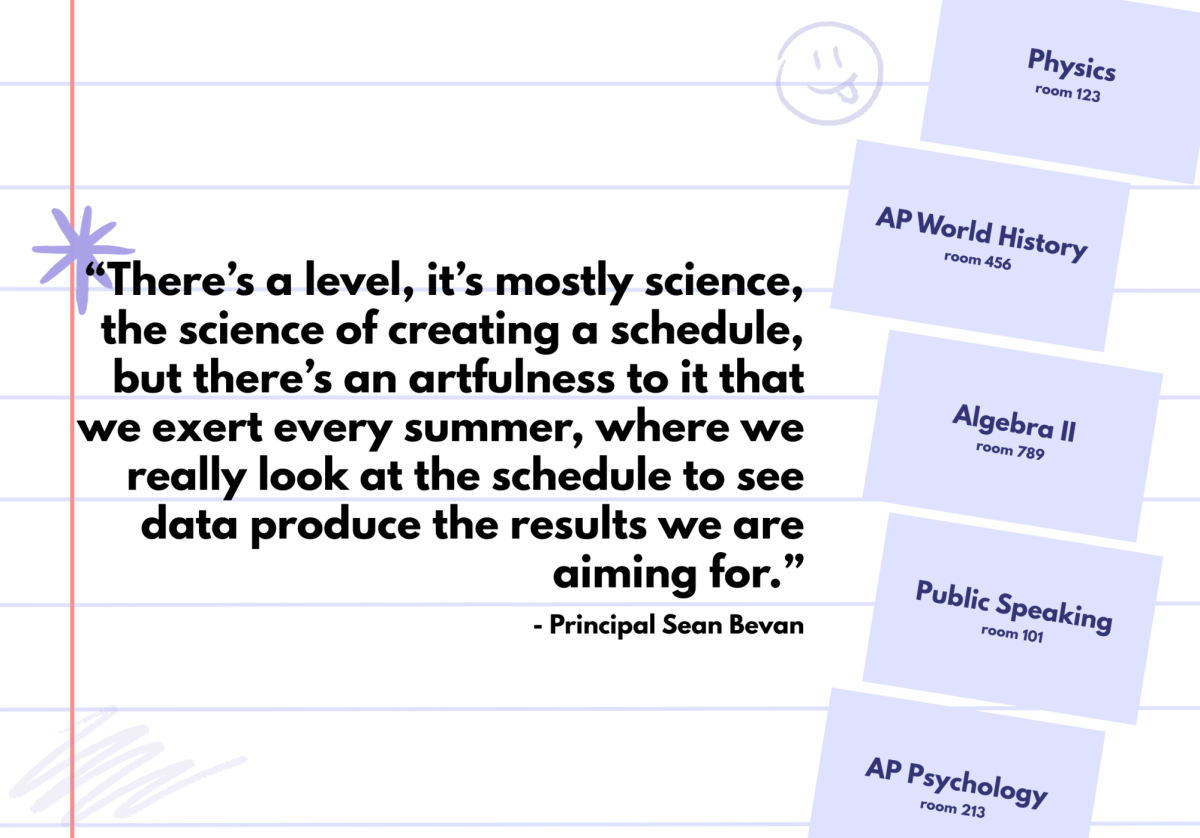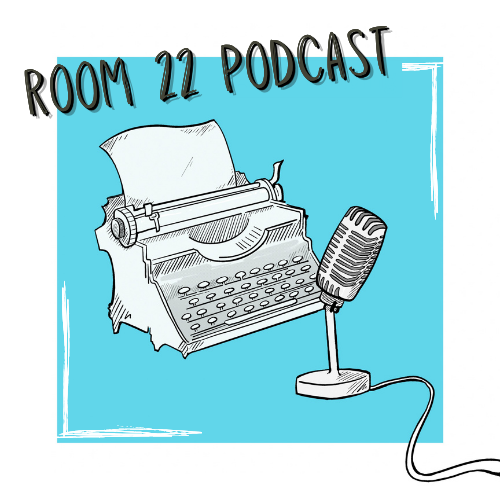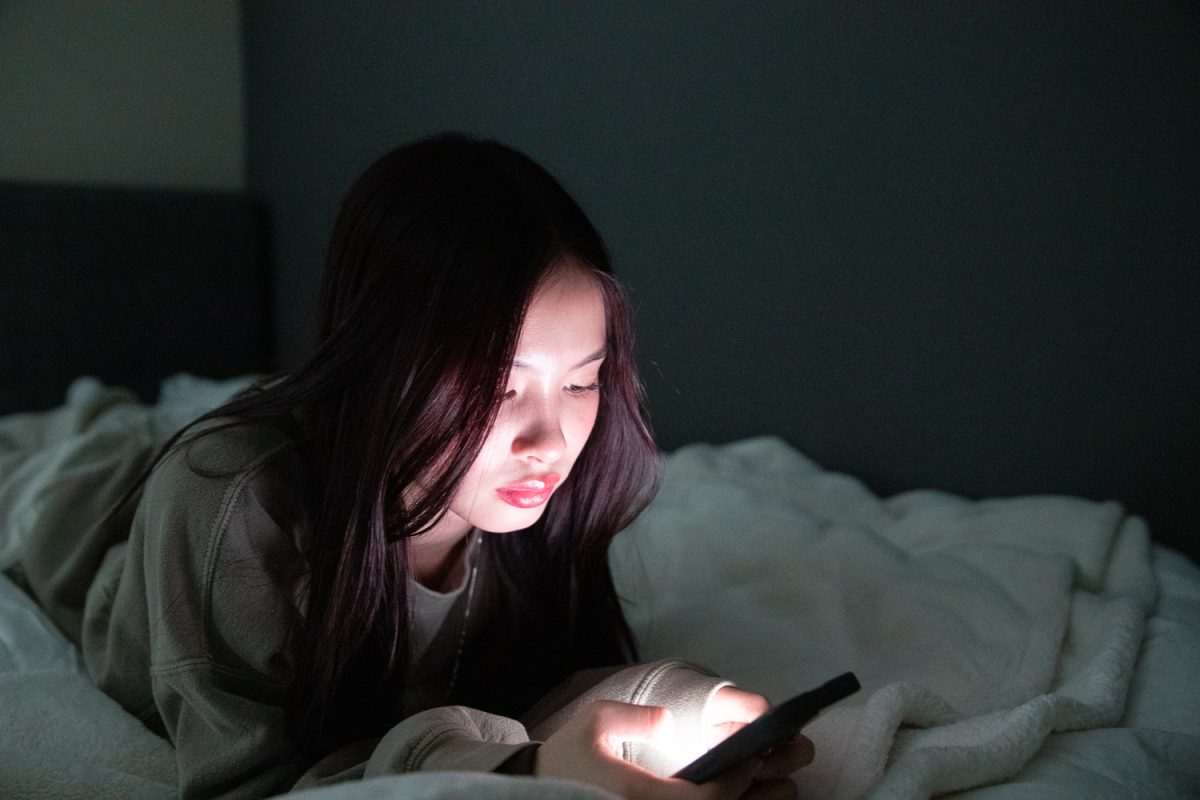Bottle after bottle. The hiss of a beer can opening. The clink of empty glasses.
After a messy breakup, Jason Lee* found himself in a downward spiral. His drinking problems worsened, leading him into a deep depression.
“After the first time, she dumped me saying that she couldn’t handle being with someone who does drugs and drinks, even as someone who drinks herself,” Lee said.
As a teenager, Lee found the easiest way to fuel his behavior was through contacts on Instagram.
The accessibility of substances on social media is just one example of how these platforms exacerbate youth issues. Beneath the viral trends and dopamine-driven interactions lies an unsettling truth: social media has often become a haven for high-risk behaviors, targeting teens in particular.
Three of the most popular social media apps for teens — Instagram, TikTok, and Snapchat — exacerbate various youth issues in distinct ways. Each application, through its fundamental design, policies, or algorithms, contributes to negative behaviors and interactions that impact entire generations.
Examining the distinct issues within each digital environment can reveal how social media shapes youth behavior and mental health — two particularly vulnerable aspects of adolescence that highlight the urgent need for intervention.
Fueling teen substance culture: Instagram
Instagram is one of the most widely used apps among teenagers, with 76% of American teens aged 13-17 using the platform, according to The Associated Press-NORC Center for Public Affairs Research.
Instagram’s popularity amongst teenagers makes it a favored platform for those seeking connections related to alcohol and drug use. While underage alcohol and drug use are inherent parts of high school life, sharing these behaviors on social media contributes to their normalization and prevalence.
Through its story feature, where users can choose who cannot view their content while mass broadcasting to all their followers, Instagram has allowed high schoolers’ feeds to be proliferated with imagery of alcohol and substance use.
“On Instagram, there are a lot of pictures of people posting about the parties they had on the weekend and at first, it looks like some kind of social gathering. But if you look deeper into the images, you can see alcohol and vapes. Even in stories, you see friends post a good picture of each other. But then you can see a vape in someone’s hand or a bottle in the background,” Lee said.
Lee, a sixteen-year-old at Carlmont, recently quit vaping, a habit he picked up after switching sports and joining a new crowd that introduced him to parties. He made the decision to stop smoking due to concerns about his personal health and the negative impact he noticed on his performance as an athlete.
“I quit for my personal health, especially for sports, since you really need your lungs. When I vape, it hurts whenever I run for too long. I decided it would be better for me to quit, especially with college recruitment coming up. If you want any chance to be noticed or scouted, you have to be actually playing, so I want to be in good playing condition,” Lee said.
According to Lee, he largely grew up around alcohol and drugs, witnessing the younger members of his extended family partake in these substances. This early exposure has led Lee to feel that using them was normal at a young age.
“Personally, I don’t think it’s so much about pressure. Drugs and alcohol have become so normalized that people view it as acceptable. Vaping and drinking have become part of teenage life,” Lee said.
Instagram’s facilitation of easy social networking allows users to not only share content that glamorizes underage use but also offers various features that make it easier for teens to communicate with others and find sources, or ‘plugs.’
While Lee has experienced smoking marijuana in addition to vaping, he stopped but continues to drink alcohol — like vodka, beer, White Claw, and Twisted Tea — recreationally at social events. He obtains all of his drinks from an individual introduced to him by a mutual friend, whom he contacts regularly through Instagram.
Lee also sources vapes from Instagram where he continues to distribute them to others, even after he stopped using them himself.
“If you know the right people and have connections, you’re going to have the easiest time getting what you need. For example, I texted my plug earlier this morning and asked, ‘Hey, can you get me this stuff?’” Lee said.
Lee’s belief that Instagram’s connectivity assists drug networking among teens is shared by Ethan Carter,* a junior at Carlmont who regularly smokes marijuana.
“Yeah, it makes it 100% easier. Social media gives students a quick and easy way to message somebody without any repercussions, and then, boom, they’re just at your house. It makes everything super accessible. Instead of having to go somewhere or talk to a friend, you can just text the person like they’re your friend, and they’ll be there,” Carter said.
Carter began smoking marijuana in freshman year when he became friends with a new group of people. He bought from a plug for the first time and continued for a while before stopping. He picked it back up during the summer with friends as a social activity, although he also smokes on his own at times.
According to Carter, Instagram can create a form of peer pressure for students to try substances due to their fear of missing out (FOMO).
“Hearing about the effects of drugs doesn’t really overpower the fear of missing out for kids who see their friends doing it,” Carter said.
Substance abuse can impair judgment, leading individuals to make poor decisions, such as posting their illegal behavior on social media. While this may be driven by the lowered self-control caused by drug abuse, it could also root in the desire of youths to gain social validation, further perpetuating the cycle.
A study from the National Library of Medicine found a significant link between substance abuse and posting on Instagram. The study found that at-risk drinking was associated with a 51.6% greater likelihood of posting on social media and an 88.1% increase in the number of posts compared to those who did not engage in at-risk drinking.
Furthermore, the study also found that drug use was also associated with increased online activity, showing a 77% greater likelihood of making any post.
Carter emphasized that the impact of substance use is normalized for those who prioritize popularity over academics. Students who are socially active may feel more inclined to engage in these behaviors, in contrast to those who are less involved.
“When people are more socially involved, it makes it more normalized since everybody they know is doing it. The kids who are less socially involved and more academically focused don’t feel the need to do it because they don’t see the ‘cool kids’ as a goal or achievement; it’s not what they aspire to be. There’s no reason for them to want to do drugs,” Carter said.
Although Carter smokes marijuana, he dislikes nicotine and has never tried it. He believes social pressure plays a significant role in why students use nicotine, reflecting a strong desire to fit in, even at the expense of their health.
“The main reason that people do nicotine is because they see other people doing it and want to fit in. There is no real benefit to nicotine; it only gets you addicted and doesn’t even get you high. People do it to look cool, and then with friends, maybe they see other people doing it and they want to,” Carter said.
Carter explained that this social pressure extends beyond nicotine to drug use in general, expressing concern over students who are considering trying drugs, and noting the potential negative consequences of giving in to this pressure.
“There’s no reason to do drugs just to look like someone who’s cooler than you, or because your friends are doing it and telling you to do it too. Obviously you can, and it’s not a bad thing to try if you want, but it’s not something that’s going to benefit you in any meaningful way. There’s only going to be harm and quick gratification. There’s no real benefit; the cons outweigh the pros,” Carter said.
Intensifying screen dependency: TikTok
Since its release in Sept. 2016, TikTok has exploded in popularity, becoming the most downloaded app in the United States in Oct. 2018. The app has only grown in prominence, with over 1 billion monthly active users worldwide, including 150 million in the United States.
The app revolves around the concept of endless scrolling—flicking through the “For You Page” to watch short videos that range from just a few seconds to a couple of minutes. This functionality has contributed to a significant decrease in attention spans, so much so that this phenomenon has been given the name “TikTok Brain.”
To evaluate user engagement with new features and content, TikTok uses A/B testing on its “For You” page, according to David Hong,* a senior managing engineer at TikTok. This method randomly distributes two versions of a feature—often one with the new addition and one without—to measure which generates more likes, comments, and shares.
For video recommendations, TikTok initially rolls out content to a small group of users whose interests match the video’s tags. By determining early user engagement, the app identifies potential viral videos before expanding their reach.
According to Hong, the app’s less aggressive recommendation system might counterintuitively lead to reduced user engagement.
“If you receive recommendations for content you’re not interested in, it can negatively impact engagement. Watching content you aren’t interested in can be frustrating. TikTok prioritizes engagement metrics, such as video completion rates and likes, rather than just screen time. Other platforms, like Instagram, may measure engagement differently,” Hong said.
In a 2021 survey conducted by TikTok, nearly 50% of users reported that videos longer than a minute were stressful, and one-third of users indicated that they watched videos online at double the speed.
“After spending a long time on TikTok, I notice that I feel more stressed and anxious as I usually procrastinate on school assignments by watching TikTok. On breaks, I spend more time on TikTok and it sometimes makes me feel disappointed since I could have been spending my time more wisely,” said Hyungchan Lyu, a senior at Cupertino High School, who averages about four hours of TikTok usage each day.
According to Lyu, using TikTok has negatively impacted his academic life and his consistently diverted focus has made the app feel almost addictive.
“It oftentimes is a distraction and hinders my ability to focus as it adjusts my brain to short-form content which makes it hard to focus on things like textbook reading and long assignments,” Lyu said.
In an effort to cut down his usage, Lyu has attempted to take a break from the app twice before. Last year, he deleted it for a week, which allowed him to focus on his schoolwork but also contributed to his boredom at home. For a few months, Lyu has had TikTok offloaded, marking the second time he has quit the app.
“This has also led me to be slightly more productive, but not as much because I have moved over to Instagram reels, where the same thing is happening,” Lyu said. “I have also tried to cut down on my usage by setting a screen time limit, and while it worked for a little while, I found myself bypassing the limit afterward.”
According to Jennel Pena, a practicing mental health therapist for four years, social media impacts teens’ mental health more than other forms of screen time, primarily due to the feeling of constantly needing to compare themselves to others on the internet.
“I have seen teens gain more anxiety from the constant need to check their social media and see what type of interactions they are getting. As far as depression, I have seen clients be sad and have low moods when they compare their lives and think they are boring or average or uninteresting. Teens with low self-esteem have to compete with other people their age, filters, and comparison,” Pena said.
Social media is undoubtedly about connection, but it can also lead to feelings of isolation. According to Lyu, TikTok has allowed him to meet new people that he hasn’t met in person and talk to them as if they were sitting right next to each other.
“On the other hand, I feel more alone when I am on the app since I am not always trying to meet new people on the app and the main reason for being on the app is to scroll and watch the TikTok videos,” Lyu said.
Contributing to teen exploitation: Snapchat
Another app significantly impacted by its fundamental design in enabling certain negative behaviors is Snapchat.
On the platform, users can send snaps, which are photos or videos that disappear after being viewed. Snapchat also includes a chat feature where messages are deleted once the chat is closed, and any screenshots of snaps are also recorded in the chat log.
The app’s temporary media feature has contributed to its role as a primary means of communication, including in situations where explicit photos are shared. This feature gives users a sense of security, as it prevents media from being easily saved. However, despite the perceived “security” of Snapchat, it is possible to bypass it, allowing for intimate content to be saved or shared without the sender’s consent.
This perceived privacy can lead to risky online interactions, raising concerns not only because underage individuals may be drawn into these activities but also because it heightens the risk of exploitation.
Chloe Perrier began using Snapchat at the age of ten, reeled in by the app’s popular filters.
However, the app’s innocent appearance quickly proved to be misleading.
According to Perrier, when she was 13 years old, she began receiving explicit images without her consent on numerous occasions — an experience that occurred so frequently that it led to an alarming normalization of sexual harassment for her, despite her young age.
“The first time I received an image, I felt physically sick to my stomach. Since then, I have received dozens of unsolicited pictures. Eventually, I grew used to receiving them, which no middle schooler should ever be,” Perrier said.
Then things took a turn for the worse. In eighth grade, personal photos she shared on the platform with someone she trusted were leaked and spread throughout her entire school.
“The feeling when I was first told will never compare to anything else I’ve experienced,” Perrier said. “The feeling of betrayal and having your privacy shown to what feels like the whole world was gut-wrenching.”
A study on Statista reported that during the second half of 2023, sexually explicit content comprised 42% of all enforcement actions taken on Snapchat. Nearly half of that figure was attributed to harassment and bullying — issues that are typically the most common with regard to cyberbullying — accounting for 22% of content violations.
“Nearly every girl I know has had an experience where she has either been begged for nudes or sent explicit, unsolicited images,” Perrier said.
The app’s design, intended to create a sense of immediacy in communication, ultimately fails to protect its users from sexual exploitation, particularly vulnerable adolescents. By promoting features that enable fleeting interactions, Snapchat inadvertently fosters a culture where unsafe behaviors and harassment can become normalized.
Navigating the future: building a safer community online
Each social media platform is associated with specific challenges for adolescents, such as substance use and screen addiction, which may exacerbate existing issues.
As social media continues to increasingly shape the lives of teenagers, it is crucial for app developers, educators, and parents to recognize its impact on young people’s wellbeing.
Interventions could take the form of platform-enforced measures, like age and content restrictions, as well as parental guidance to help mitigate the risks and dangers of the online world.
According to Pena, teens must realize that they should step away from the digital world especially if their mental health is declining over time or their daily usage is increasing.
“Teens should find more ways to be mindful of their presence and engage in real-life things with friends instead of online. The second you no longer enjoy social media is a good indication to give it up,” Pena said. “If teens realize that no one cares as much as they think their peers do, they will feel more free.”
Tackling these challenges requires collaboration among these key stakeholders in digital safety to foster safer digital spaces and encourage healthy online social interactions and habits for young users. By implementing platform safeguards and providing guidance for navigating the digital landscape, a supportive online environment can empower adolescents to use social media responsibly, ultimately benefiting their well-being.
*This source’s name is changed to protect them from legal consequences. For more information on Carlmont Media’s anonymous sourcing, check out Scot Scoop’s Anonymous Sourcing Policy.
This story was originally published on Scot Scoop News on December 3, 2024.






































